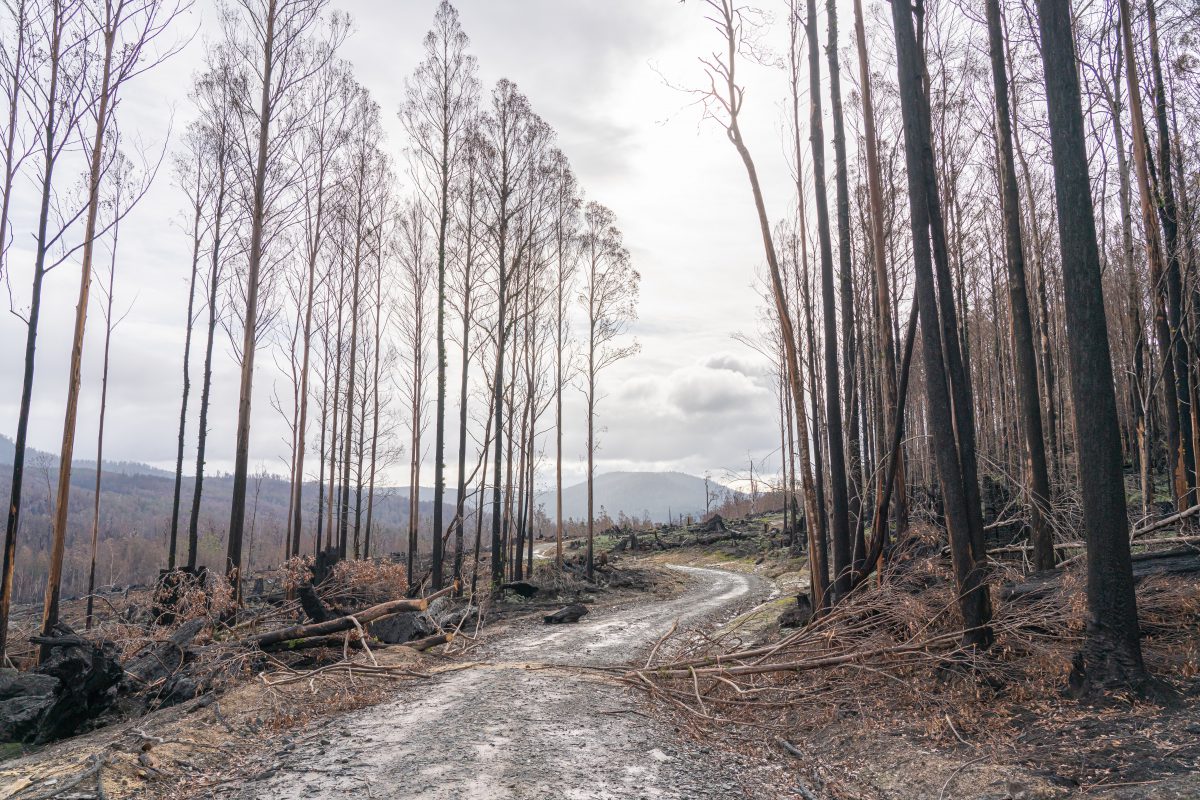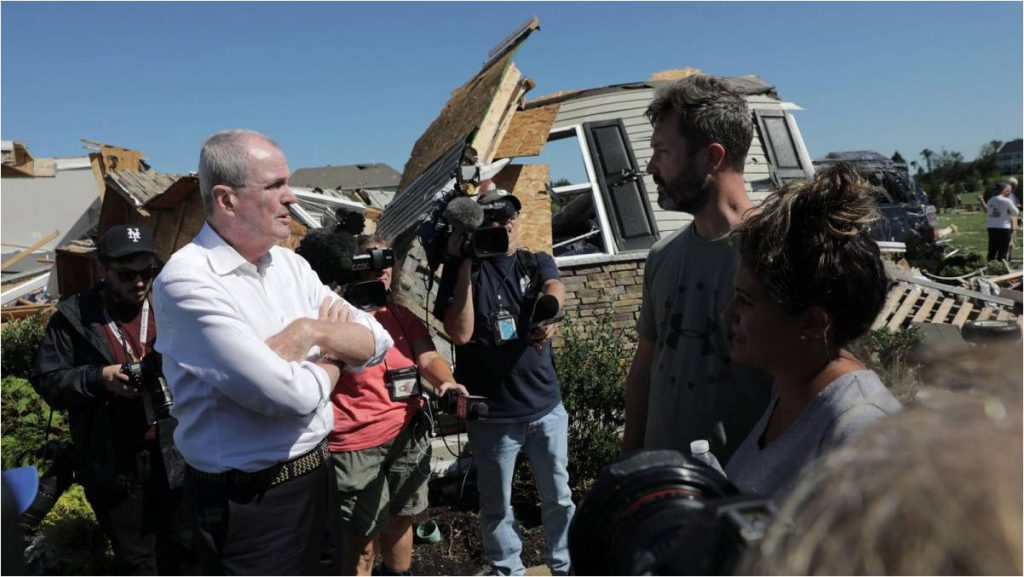NB4 – A new neologism applied to never before encountered climate extremes

‘NB4′ is a very useful neologism for our times and we all need to seriously think about why we need to invent this term for the crescendo of climate related catastrophes and what that is telling us about our species’ prospects for the future. And note, with one exception, the Yale Climate Connections article below only lists NB4s affecting North America. Based on the last few years of news, most countries in the world would be able to list their own crescendos of NB4s.
In Australia conspicuous NB4s include the unprecedented flooding in 2019 of NW Queensland that killed around 600,000 cattle and untold wildlife, the 2019-2020 Black Summer wildfires burning more than 18 MILLION hectares in eastern and southern Australia, and even the mid June flooding and storm damage in Victoria – equivalent to what a Cat 3 Cyclone might cause.
The exception in the Climate Connections article is, of course, the plethora of NB4s associated with the ‘amplification’ of global warming in the Arctic, including the NB4s of ice melting, high temperature records, and associated wildfires.
The unmentioned elephant in the room of this article is to think about what is the climax that the crescendo of NB4s is building to. If we do not stop the process causing the crescendo, the inevitable climax will be the sixth global mass extinction, including our own species extinction — and this will be in the near term.
It is time for the Congress and its citizen constituents, decision-makers of all sorts, and opinion-makers of all political persuasions [and particularly in Australia] to acknowledge that human-driven climate change is undeniably causing catastrophic effects in ways never seen before. And those often-calamitous effects are not only in the “usual suspect” places and the results of predictable reasons.
[Extracted from the article below]
If we are to have a future, acknowledgement of the reality must be urgently followed by total mobilization and action to slow, stop, and reverse global warming. Because the process is clearly accelerating (as demonstrated by the rapidly growing sequence of NB4s), if we don’t do this pretty damn quick it will be too late as Earth’s Climate System flips us and our biosphere into its Hothouse Earth mode.
This is why we must Vote Climate One to elect Parliamentarians who will put stopping global warming as the number one priority guiding their actions in government.
‘Never Before’ (NB4) extreme weather events … and near-misses
by Gary Yohe, Yale Climate Connections – September 9, 2021,
A recurring and troubling pattern of first-time historic weather events provides firm support for citizen and leaders to acknowledge human causation and take needed needed mitigation and adaptation steps.

Attributing extreme events to climate change – including those highly reported though the media – is a difficult task frequently requiring lots time to complete rigorously. The usual mantra is that climate change did not cause X, but climate change did contribute significantly to its intensity and/or its frequency. Which raises the question: “By how much?”
But experience on the ground sometimes makes that attribution to climate change a no brainer. How so? Because no other influence can explain many of the recent events because there is no precedent for their having ever been happened before. Call them “Never Before” in history events (NB4s).
The mundane “Who cares?” version of an NB4 event can be found in the time series of an index of annual mean surface temperature. The five-year trend comparison has been de rigueur for decades, but over just the past 20 years, the “This has been the hottest year ever” framing has been assigned to five of those years.
Another example of a time series worrisome to many experts involves Hurricane Harvey, in 2017. Harvey stalled over Houston for nearly two days. It dropped 42 inches of rain while it was just hanging around with nowhere to go. Stalling of hurricanes has been attributed to a reduced temperature difference between the poles and the tropics. It is a signature of climate change that now includes Ida over Louisiana. In Houston, climate change caused the third “500-year flooding” event in four years – certainly a damaging NB4.
In the summer of 2020, leaking methane from the melting permafrost across tundra in Siberia released methane that spontaneously ignited when temperatures well above the Arctic Circle exceeded 100oF. The high temperatures are a product of global warming, but the interaction with the tundra is a very troubling NB4.
Hurricane Ida was the second Category 4 (nearly a Cat 5) storm to make landfall in Louisiana in two years. Ida tied the record for gaining intensity when approaching landfall. The cause of that rapid intensification? Temperature of the Gulf of Mexico waters provided fuel to buttress the intensity. Those water temperatures across the Gulf ranged between 88oF and 90oF to a depth of 150 feet – never before in recorded history.
Subsequently, how is it possible that more than 15 times as many people died from exposure to Ida in eight mid-Atlantic states than in Mississippi and Louisiana combined? Because the severity was unexpected, and many people were unprepared.
In New York City, sustained rain for one hour exceeded three inches during Hurricane Henri in early August, an all-time record. Less than two weeks later, the remnants of Ida piled on with a new all-time record of 3.15 inches for New York City and 3.24 inches for Newark, New Jersey. Surely another NB4, and especially for piling on. IDA was an NB4 event at least three times over.
Who should care? Surely insurance companies should … and do. They diversify by geography against severe storm events. They increasingly face storm liabilities not only in the anticipated urban and rural and coastal areas along the Gulf of Mexico, but also, and increasingly, in the more densely populated broadly distributed areas of New York City, New Jersey, and even Philadelphia. The former they’ve anticipated. The latter, not so much.
And then, not to be outdone or forgotten, there are the rampant wildfires in California: 2018 brought the largest fire in Cal Fire’s recorded history. The following year, 2019, was more modest in its aggression, but 2020 erupted with a new largest fire in history. The conflagration was also burning at the very same time as the 3rd, 4th, 5th and 6th largest fires in history. Why the intensity? Megadrought, pine bark beetles that had not suffered through their usual winter freeze for a decade, and extreme record heat combined with record dry lightning. 2020 was an NB4 year.
This calendar year, 2021, has shown no sign of backing down from the challenge to be the worst. It, too, boasts an NB4 claim not only from the same causes, but also for a different reason: No California fire in history had ever climbed the Sierra Nevada mountains and rolled down the eastern side toward Nevada. The Dixie fire accomplished that heretofore-unprecedented feat. But wait, as the cheap cable commercials say, there’s more: A month or so later, the Caldor fire did the same thing, soon seriously threatening South Lake Tahoe for the first time in history. Consider it an NB4 two-fer.
With regard to heat waves, look across the U.S. Pacific Northwest and western Canada. Seattle, for instance, experienced three successive days in the summer of 2021 with maximum temperatures of more than 100oF (June 26-28, 2021). In all of prior recorded history, Seattle had seen only three days above 100oF (July 16, 1941; July 20, 1994; and July 29, 2009). Portland, Oregon, and other areas – places where residential air conditioning are few and far between – fared no better and in some places worse.
And then there is rain in Greenland for the first time, the biggest tornado (spawned by Ida) in New Jersey history, seven inches of rain in Central Park tying the 1927 record, and so on …
It is time for the Congress and its citizen constituents, decision-makers of all sort, and opinion-makers of all political persuasions to acknowledge that human-driven climate change is undeniably causing catastrophic effects in ways never seen before. And those often-calamitous effects are not only in the “usual suspect” places and the results of predictable reasons.
They are occurring unpredictably and in surprising and unexpect[ed], and therefore often [the] least prepared, places.
The hottest summer most Americans have ever lived through
Gary Yohe is the Huffington Foundation Professor of Economics and Environmental Studies at Wesleyan University in Connecticut. He served as convening lead author for multiple chapters and the Synthesis Report for the IPCC from 1990 through 2014 and was Vice-Chair of the Third US National Climate Assessment.